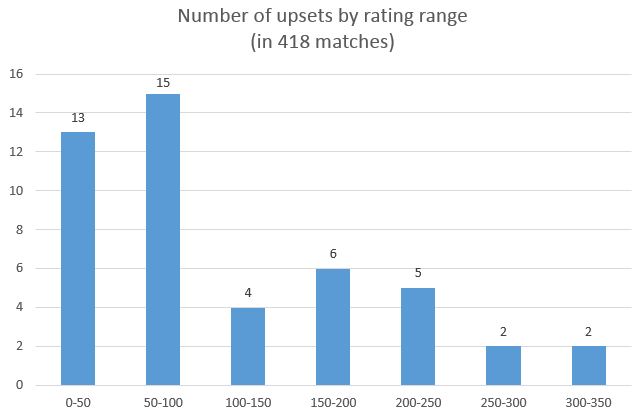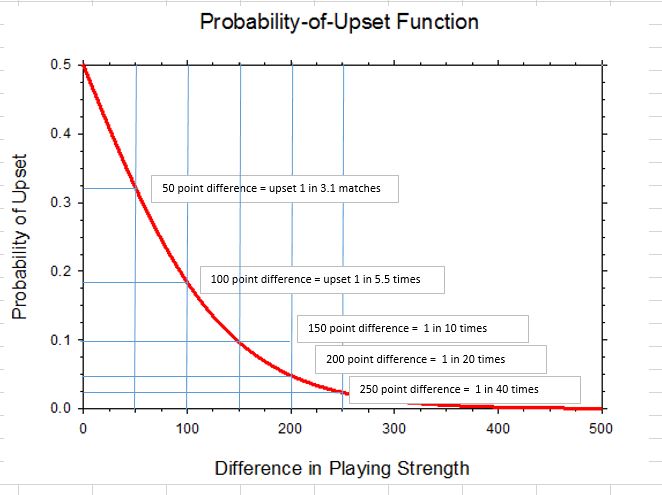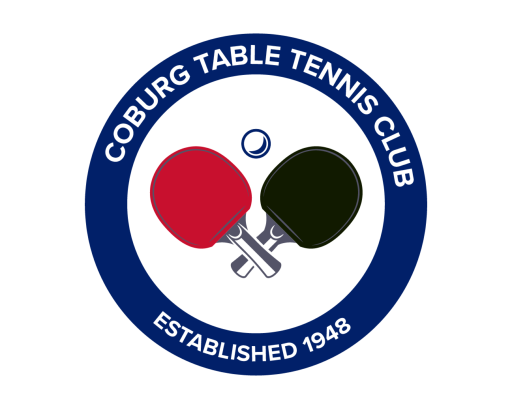written by John Griffiths.
Some excellent results for Coburg at the Victorian Open Veterans Event on Saturday, see this article for individuals of note (sorry if I missed someone’s good results).
A work colleague noted I only beat one player rated higher than me on Saturday. I explained to him that now the ratings system has been in place for a while and most players have enough games under the belt to get a fairly accurate rating, beating a higher ranked player is not an easy task. Heck, beating someone with the same rating isn’t easy … statistically it’s 50/50 ! But, he expected me to be beating players 100-200 points above me, so I clearly needed some maths to prove my point. So I took the 418 matches played last Saturday and did some analysis, and the following was the result.
Total players: 145
Total matches: 418
Total upsets: 47 (11.2%) therefore a total of 371 games went according to ratings probability.
Number of individual players who won in an upset match: 37 (25.5%)
Upset Mean Rating Difference: 110 points
Upset Median Rating Difference: 83 points
Upset Rating Difference Minimum: 4
Upset Rating Difference Maximum: 320 (this was our own Marilyn Knight! What an amazing win!)
The number of upsets in the Vic Open Veterans and the ratings difference ranges are shown in Chart 1 below.
Chart 1: Number of upsets in 50 point ratings difference ranges

According to D.J. Marcus (PHD Mathematics (Probability) from M.I.T), the creator of the website ratingscentral.com, the probability of an upset function quantifies as per the graphic below. I have updated it to include the “one in X matches” probability detail to describe things for the non-mathematically inclined.

So as is shown by the probability, and by the results of the Vic Open Veteran event on Saturday, beating someone rated higher than you is no easy feat with only 11 per cent of matches being an upset.
Is the ratings system fit for purpose? It may not perfectly represent the exact performance ability of a player, but that is not its purpose and would be impossible to do on any one day. The ratings system represents that ability within a range, based on the games you have played. Nothing can predict the future. There is a standard deviation (plus or minus amount) and that is there due to the number of games played, the doubt as to how a player may play on a day/night, how they are feeling, how much they have been practicing, how often they are playing and if the moon is out. 🙂
I personally think it is a great system and guide of your historical performance. It is definitely an excellent additional to table tennis in Victoria and thanks goes to David Kumar and Greg Bristowe for managing the data entry for Coburg.
For more on the Vic Open Veteran’s – see this post, where Marilyn Knight defies the mathematicians!
Author: John Griffiths
